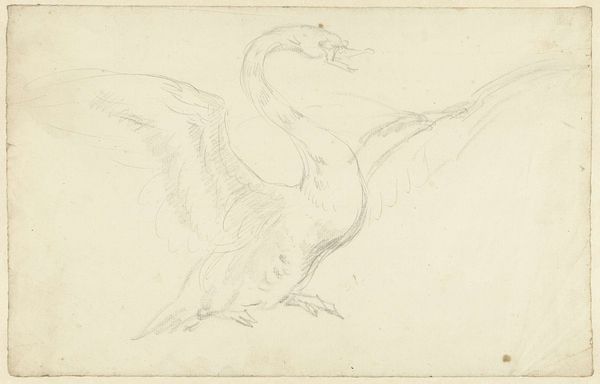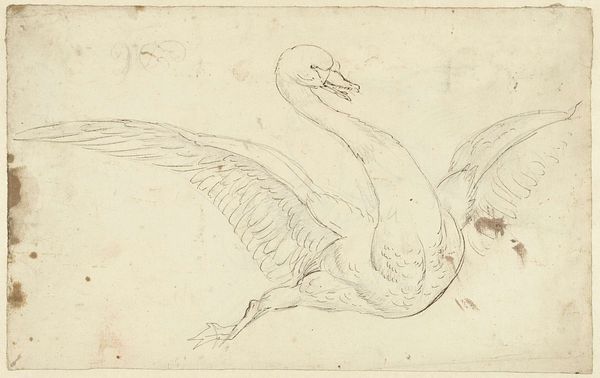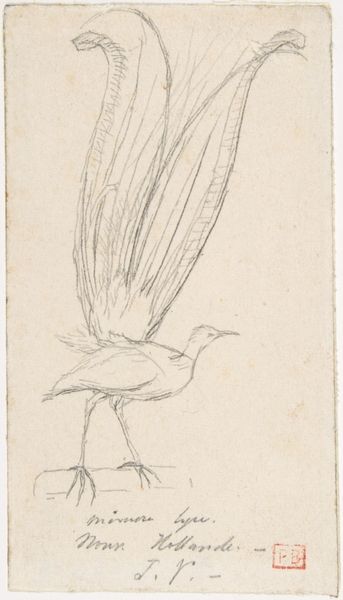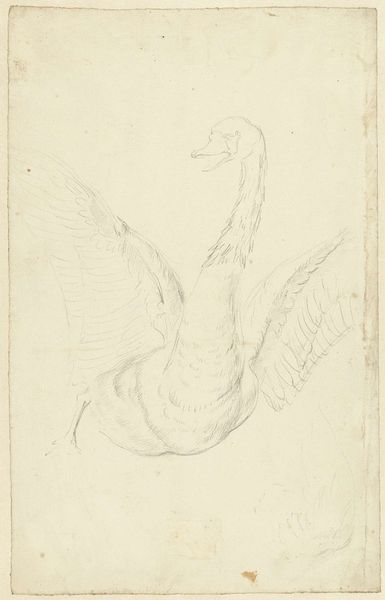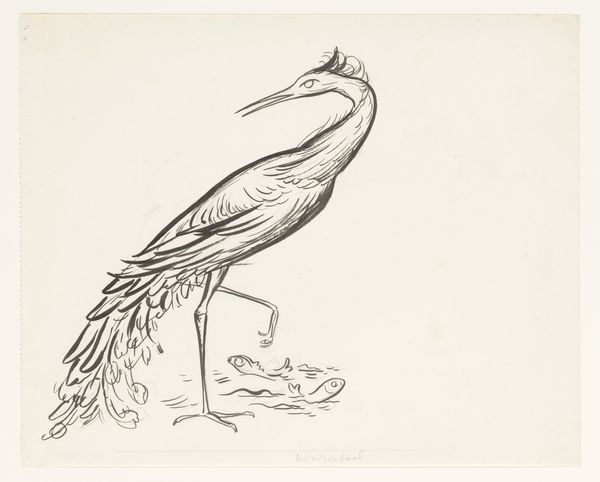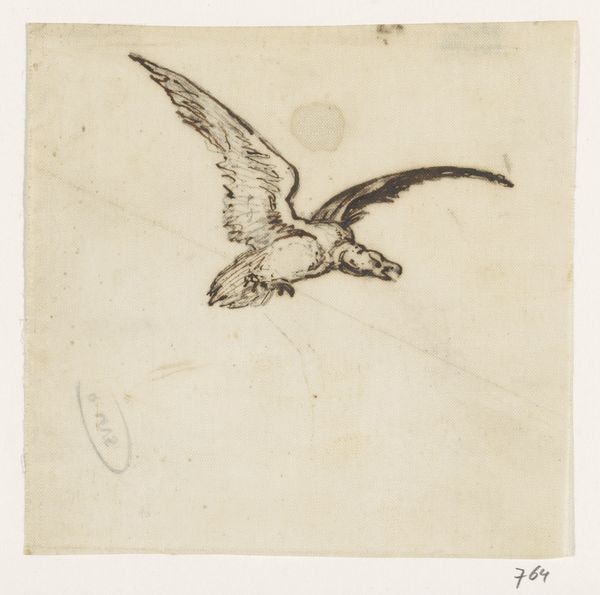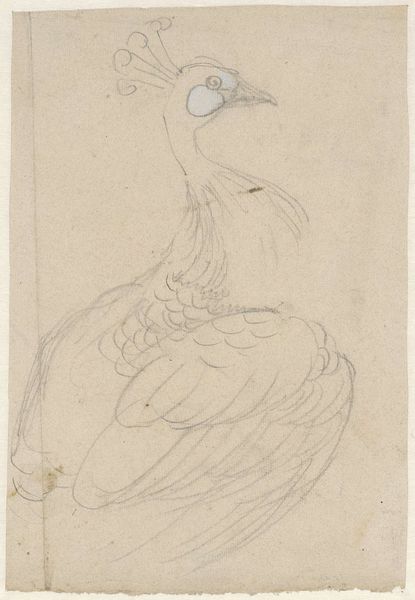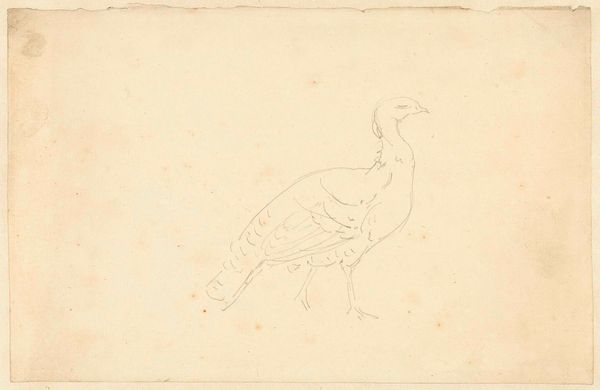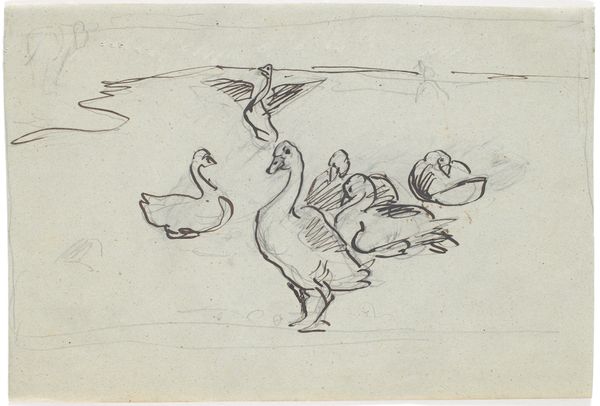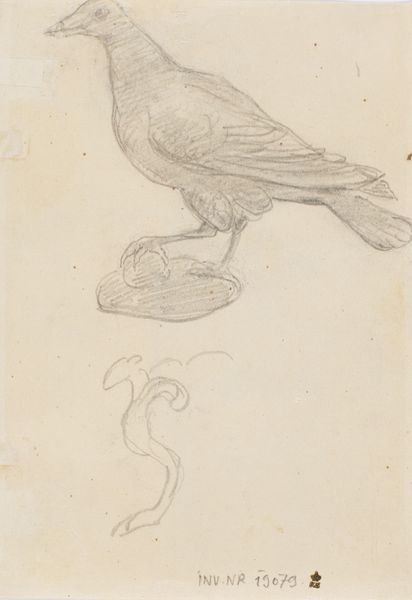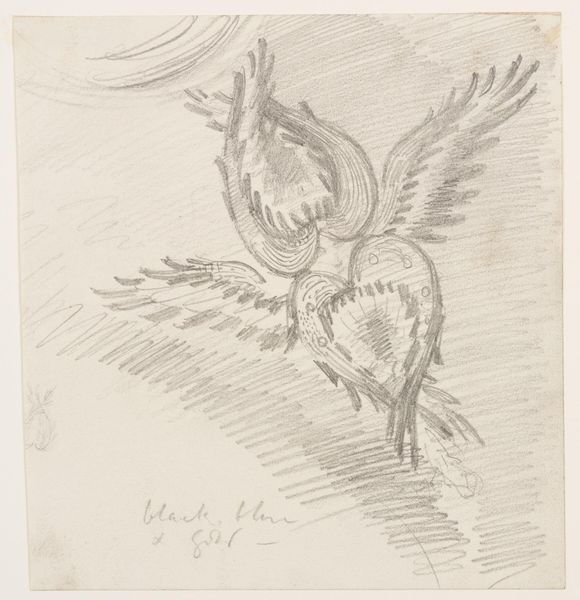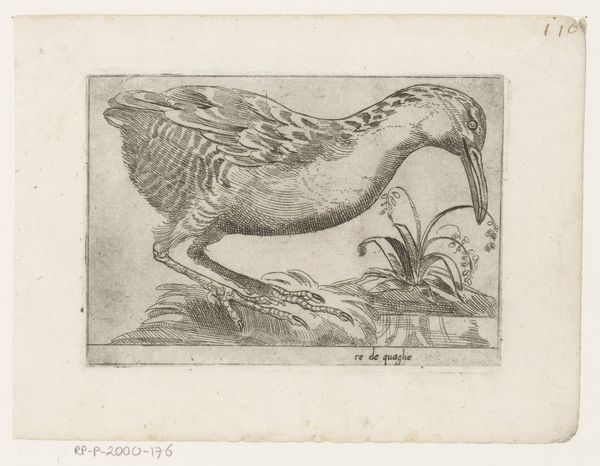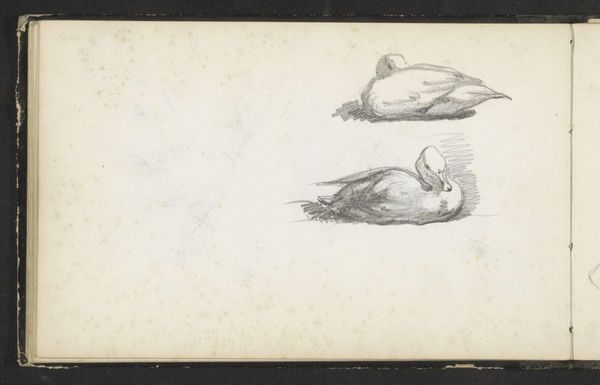
drawing, pencil
#
drawing
#
landscape
#
pencil
#
realism
Copyright: Public Domain: Artvee
Editor: Here we have "Wild Duet," a pencil drawing by Charles-François Daubigny, created sometime between 1837 and 1878. It’s a rather simple composition, just two birds sketched with visible, energetic strokes. What do you see in this piece? Curator: Beyond a simple study of birds, I see a powerful statement about nature and freedom during a time of immense social and political change in France. Consider the rise of Realism in art during this period. How might Daubigny be challenging established artistic conventions that often ignored the natural world, especially its raw and untamed aspects? Editor: That's interesting. I guess I hadn’t thought of it in terms of challenging conventions. I just saw a quick sketch of a bird flapping its wings! Curator: Precisely. Daubigny isn’t just sketching a bird, but also capturing a sense of dynamism, of unrestrained movement. We might consider how the drawing, made with quick, almost frantic strokes, speaks to a yearning for liberty, mirroring social upheavals. Think about the political climate then – what societal constraints might this "wild duet" be resisting, symbolically? Editor: So you're suggesting that these birds represent a kind of rebellious spirit? Curator: It's a proposition. The artist, sensitive to the undercurrents of his time, consciously or unconsciously infused that sensibility into this nature study. The artwork serves as a mirror, reflecting the societal discourse. What could the "duet" signify in this broader context? Editor: Hmm, I'm not sure. I hadn’t considered this beyond the simple depiction of birds…I guess there's a whole world of interpretation that I was missing. Thanks! Curator: Absolutely, it reminds us to appreciate the power of art as an expression of social consciousness. And that’s what I am going to take away from our conversation today.
Comments
No comments
Be the first to comment and join the conversation on the ultimate creative platform.
